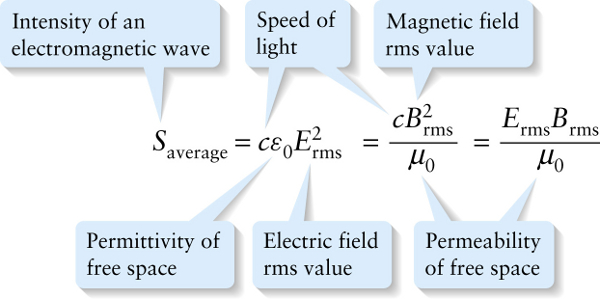Intensity of an electromagnetic wave (22-25)
Question 1 of 6
Question
Electric field rms value
{"title":"Intensity of an electromagnetic wave","description":"Wrong","type":"incorrect","color":"#99CCFF","code":"[{\"shape\":\"poly\",\"coords\":\"82,133\"},{\"shape\":\"rect\",\"coords\":\"10,16,12,16\"},{\"shape\":\"poly\",\"coords\":\"144,22\"},{\"shape\":\"rect\",\"coords\":\"1,19,10,39\"}]"} {"title":"Speed of light","description":"Wrong","type":"incorrect","color":"#ffff00","code":"[{\"shape\":\"rect\",\"coords\":\"71,21,81,35\"},{\"shape\":\"rect\",\"coords\":\"159,7,170,20\"}]"} {"title":"Magnetic field rms value","description":"Incorrect","type":"incorrect","color":"#00ff00","code":"[{\"shape\":\"rect\",\"coords\":\"170,2,181,21\"}]"} {"title":"Permeability of free space","description":"Incorrect","type":"incorrect","color":"#000080","code":"[{\"shape\":\"rect\",\"coords\":\"172,33,184,49\"},{\"shape\":\"rect\",\"coords\":\"258,31,273,49\"}]"} {"title":"Electric field rms value","description":"Correct!","type":"correct","color":"#ff6600","code":"[{\"shape\":\"rect\",\"coords\":\"94,17,108,36\"}]"} {"title":"Permittivity of free space","description":"Incorrect","type":"incorrect","color":"#ff99cc","code":"[{\"shape\":\"rect\",\"coords\":\"80,23,92,36\"}]"}Review
Equation 22-25 leads us to predict that light of any frequency should be able to liberate an electron from the surface of a material, provided the light wave is sufficiently intense. Experiment shows that this is not the case. For example, if the biological sample shown in Figure 26-2 is illuminated with red light, no electrons are ejected no matter how intense the light. But if instead we illuminate the sample with X rays, which have a higher frequency than red light, electrons are ejected. (Figure 26-2b was made by using X rays.) This is impossible to understand on the basis of Maxwell’s equations.

